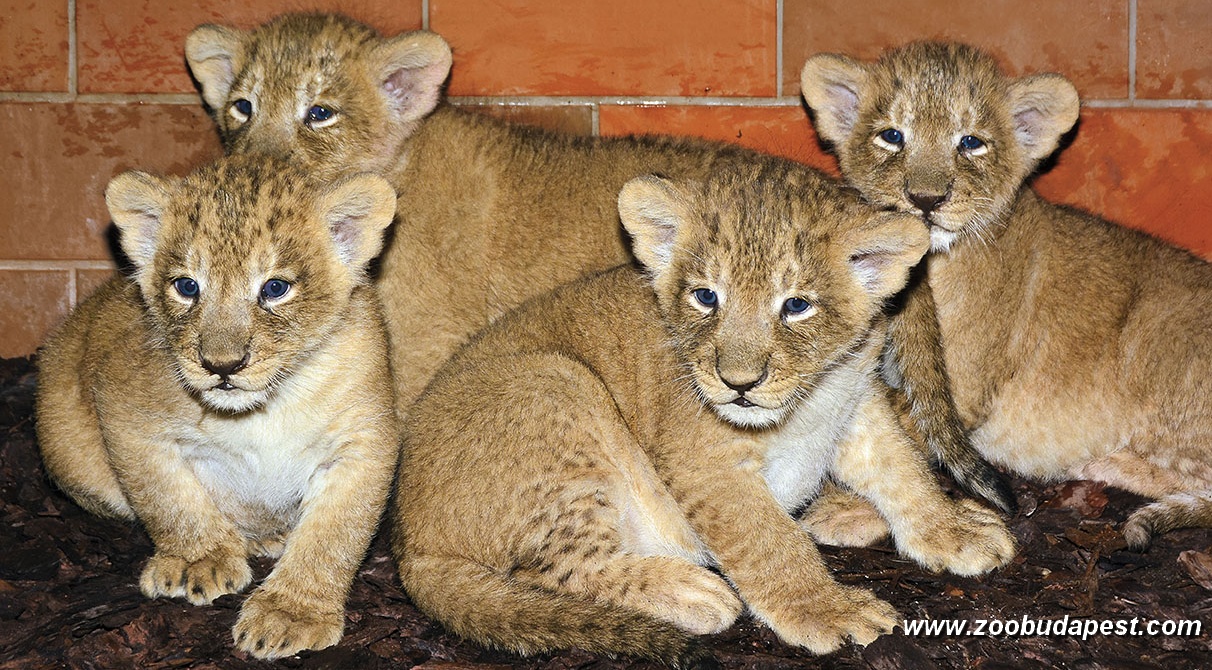Asiatic lions born April 2, 2013

Asiatic lions
Asiatic lions once occured widely in Asia but they have become extinct in nature except for the Gir Forest National Park in India where a population of around 300 lions live in a nature conservation area. There are about 400 other specimens living in 43 European and Asian zoos. This is why it is a milestone in the life of the Budapest Zoo to have four new-born Asiatic lion cubs at the same time.
The reproduction of African lions dates back to more than a hundred years at the Budapest Zoo.
Zoltán Rátonyi, one of the former zoo directors even published a book about the reproduction of zoo lions in 1927. Until recently, however, the reproduction of the much rarer Asiatic lions had been unheard of in our country.
Shirwane, the mother of the cubs was born at the Mulhouse Zoo in France in 2008 and has been living at the Budapest Zoo since 2010. Basil, the father is a year younger and he also arrived in Budapest in 2010. The four lion cubs will make their first public appearance at easter 2013.
About Asiatic lions
There is little people know about the seriously endangered Asiatic (Indian) lions (Pantheraleopersica), mainly because most of us regard lions as an African species, as the majority of lions living in the wilderness can be found in the Black Continent.
In historical times the species used to thrive outside Africa. It was widespread in Southern Europe, South-West Asia and South Asia. The rapidly growing human population needed more space, changed the environment and lions' natural habitatgradually diminished. They became extinct from their natural environment. They disappeared from Southern Europe in the ancient times but still survived in Western Asia until the turn ofthe XXth century. They were seen in Persia (today Iran) until the XIXth century, mainly around the Zagros Mountains. They have completely disappeared from these areas by now. The only place to find Asiatic lions in their natural habitat is in India's Gujarat State. The Gir National Park and Sanctuary has a steadily increasing population of about 400 Asiatic lions and there are around 300 specimens living at 43 different zoos of Europe and Asia.